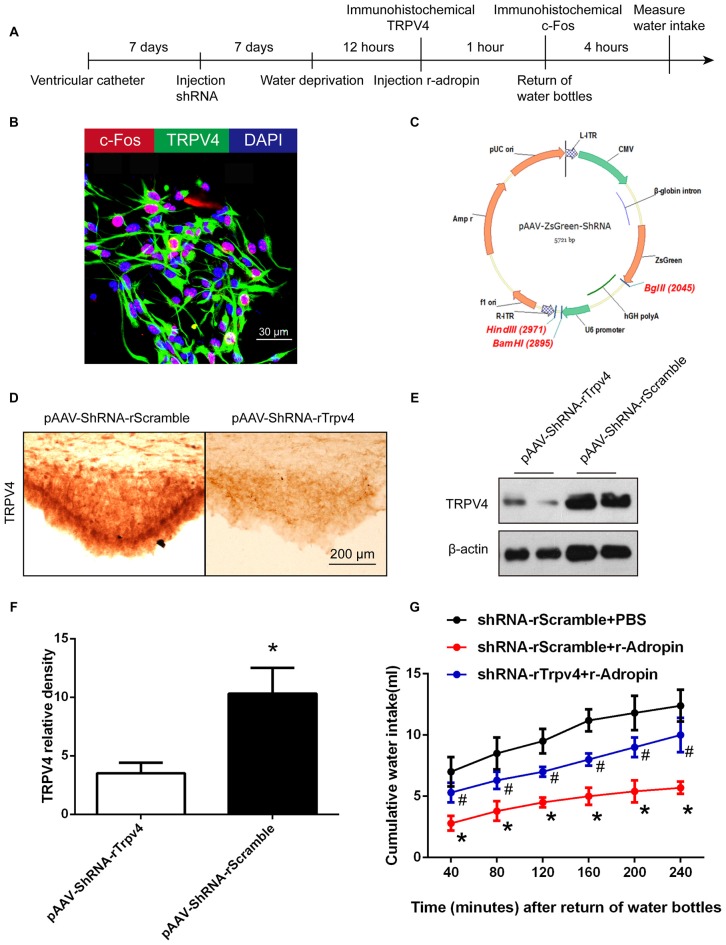Figure 3.
Central administration of recombinant adropin mimicked anti-dipsogenic effects by activating TRPV4 neurons under normoxic condition in SFO. (A) The experimental design to study the mechanism of central anti-dipsogenic effects (Figures 3, 4). (B) TRPV4 (green) and c-Fos (red) within the same cells in SFO of wild-type rats after water deprivation for 12 h. The right panel shows a magnified view illustrating the overlap between c-Fos and TRPV4 positive signals. Nuclei were counterstained with DAPI (blue). Scale bar, 30 μm. (C) Construction of pAAV-ZsGreen-ShRNA cloning vector for S. thermophiles. (D) TRPV4 (visualized as brown staining) was down-regulated in SFO 7 days after injection of Trpv4 shRNA into the third ventricle. Scrambled shRNA was used as a control. Scale bar, 200 μm. (E) TRPV4 in SFO was detected by western blot. (F) Relative protein expression was calculated (n = 6 for each group, *P < 0.05). (G) Central administration of recombinant adropin (3 nM) inhibited water intake after 1 h and the inhibitory action of adropin was blocked by TRPV4 shRNA after 4 h in overnight water-deprived rats (n = 8 for each group; *P < 0.05 vs. control group; #P < 0.05 vs. recombinant adropin group).

